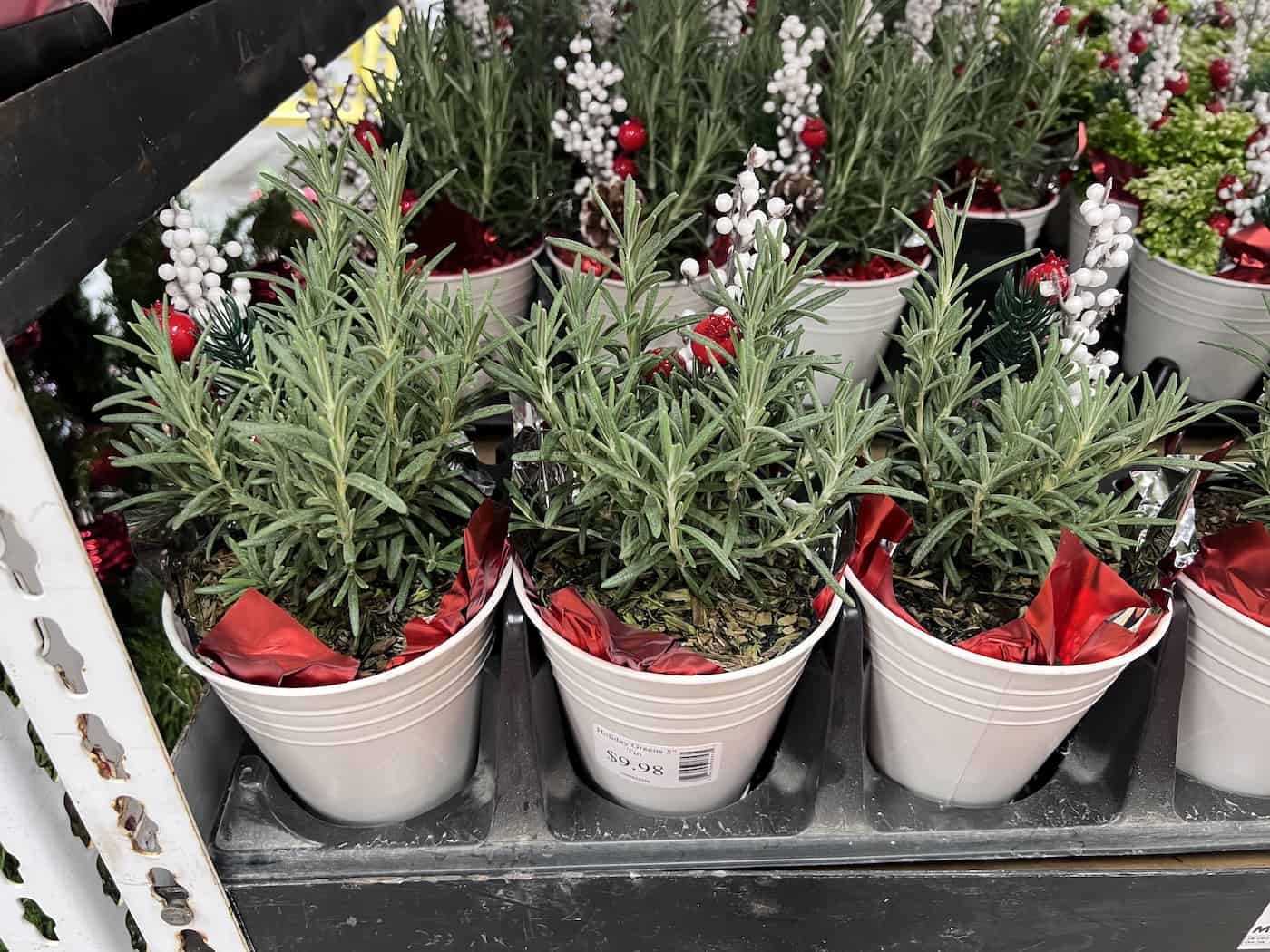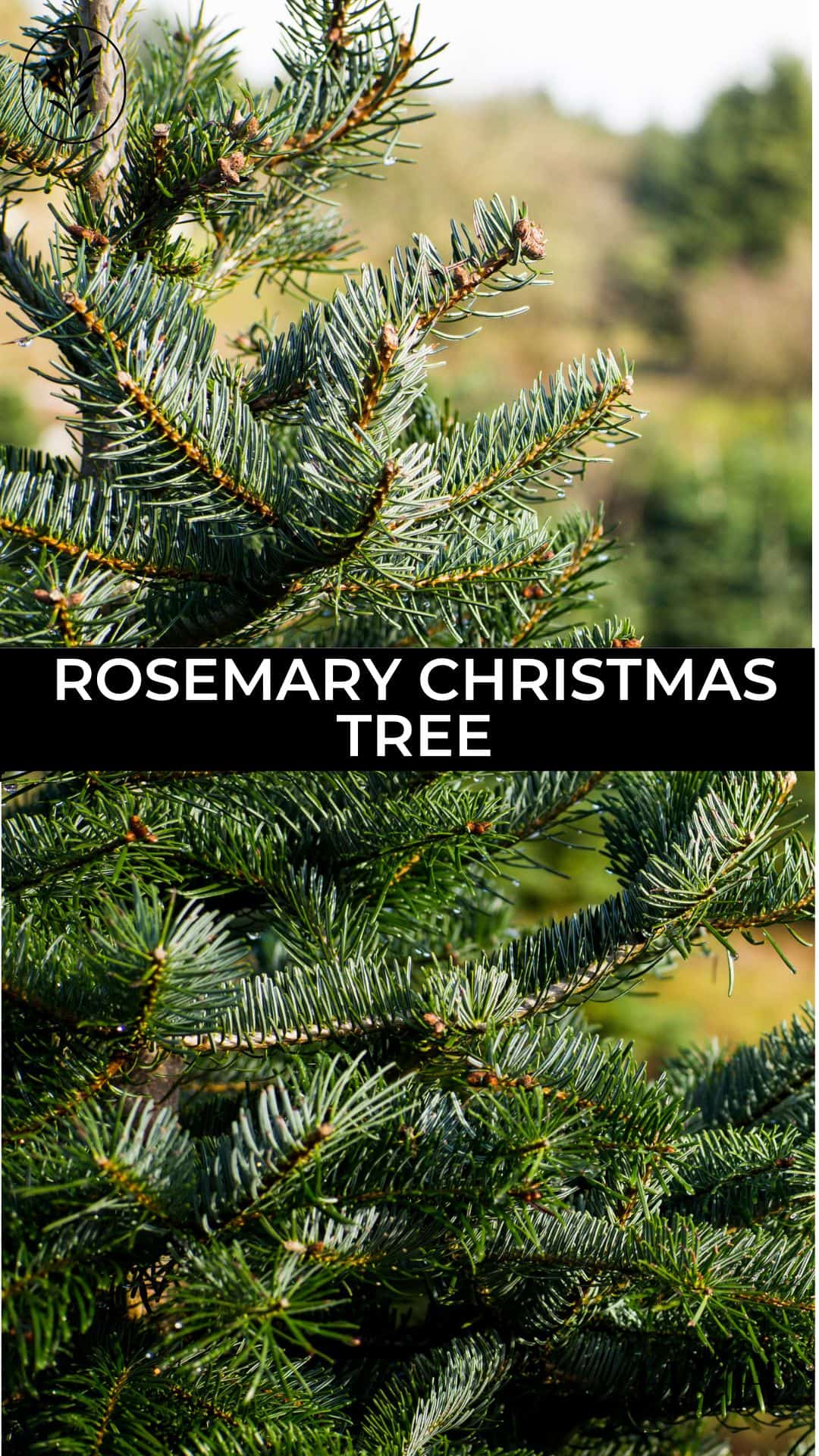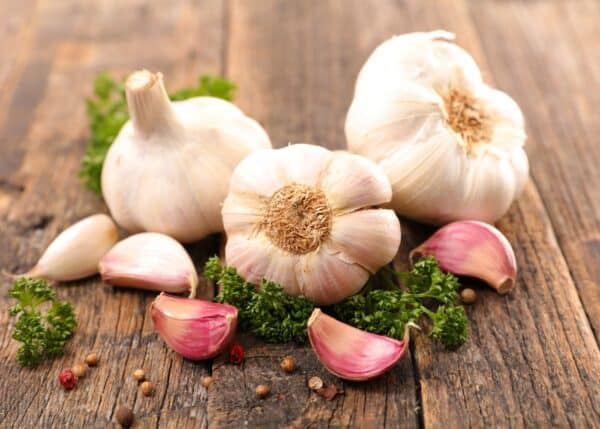Rosemary has been used to decorate and symbolize the holidays for thousands of years. As the popularity of mini Christmas trees increases, so does the availability of Rosemary Christmas Trees!
Rosemary Christmas Trees are small potted rosemary plants that have been pruned into a conical shape to resemble a tiny Christmas tree. These adorable little houseplants are commonly sold in November and December, often in festive containers. Rosemary Christmas trees are wonderful Christmas plants that can be kept after the holiday to enjoy for years to come.
Keep reading to uncover the basics of Rosemary Christmas Trees and how to properly care for them before, during, and after the holidays!

Rosemary Christmas trees basics
Rosemary Christmas trees are smaller versions of the rosemary plant that have been pruned to look like a Christmas tree. These plants are extremely popular during the holidays because of their fresh, piney scent and Christmas tree-like appearance. Most people will buy rosemary Christmas trees purely for looks. However, with proper care, you can maintain your rosemary plant for year-round fragrance and cooking purposes!

Where to buy a rosemary Christmas tree
You can buy a rosemary Christmas tree from many garden centers or plant stores! If you don’t want to go to a garden store, you can also buy rosemary Christmas trees online.
Plant care for rosemary Christmas trees
Rosemary Christmas trees are extremely easy to care for, making them great beginner plants. These plants are also pet-friendly, so you don’t need to worry about your furry friends getting into your plant.
Rosemary Christmas Trees are super easy to care for.
It’s mostly the dry heat in our homes that make survival difficult for rosemary plants. Raising the humidity level can help the plant survive. Also keep the plant away from direct sunlight, heat registers, fireplaces, televisions and other heat sources.
Louise Estabrook at the University of Georgia
Watering a rosemary Christmas tree
First, when you bring home your rosemary tree, water it immediately unless the soil is very moist and the pot is heavy. The tree has generally been taken from its luscious greenhouse into a big box store and most likely hasn’t been watered in a while. You can continue watering every week or two depending on how dry the soil is. Read more about how often to water rosemary if you’re unsure about watering frequency.
Air temperature for rosemary Christmas trees
Rosemary Christmas trees need warm temperatures of at least 60 to 65 degrees Fahrenheit to thrive. These plants also need moderate humidity because they tend to dry out indoors.
If you live in a climate with warmer winters (above freezing), you can keep your rosemary tree outside. However, if you live in a colder climate, keep your rosemary tree inside during the winter. Caring for rosemary Christmas trees is very similar to caring for standard rosemary tree topiaries or for potted lavender trees.
Pruning Rosemary Christmas trees
High-quality rosemary Christmas trees generally arrive neatly pruned into a conical shape. Over time, however, the branches can grow at different rates resulting in a more shrub-like appearance. If keeping your rosemary Christmas tree from year to year, give it one big pruning each spring.
Cut back the branches into the cone shape, removing up to half the length of the branch (or more for healthy specimens) if necessary. The tree will put on fresh growth during the growing season and can then be given a final trim in the fall to give it that neat conical appearance. Read more about pruning rosemary here.
How long will a Christmas rosemary tree last?
When people buy rosemary Christmas trees, they usually only buy them for one season. That being said, rosemary plants can last for years if cared for properly. If you want to keep your rosemary Christmas tree as a shrub, you can turn your plant into an outdoor perennial in warm climates. In areas with freezing winters, rosemary can still be kept for years but will have to be grown in a large planter pot where it can be moved to overwinter indoors.
Generally, you will need to repot your plant into a larger terracotta pot after you get it to ensure the roots can grow. Then, water your tree every so often in a pot with good drainage.
Next, you will need to move your pot outside on days when the temperature is 40 degrees and above. Rosemary trees love sunlight and thrive with 6-8 hours of full sunlight. If you don’t want to move your rosemary plant outside, you can keep it inside as long as it has ample light and the air isn’t too dry.
How tall will a rosemary Christmas tree grow if planted?
Rosemary Christmas trees are bigger rosemary bushes that have been pruned down into the shape of a Christmas tree. For this reason, you will need to repot your rosemary Christmas tree if you want it to grow taller. If you repot your Christmas tree into a larger pot, you can expect your tree to reach 2-3 feet tall after several years of growth.
How to make a rosemary Christmas tree
To get a rosemary Christmas tree, you can either buy a rosemary plant in the shape of a Christmas tree or you can trim an existing rosemary plant into the shape of a Christmas tree. When you buy a rosemary Christmas tree from the store, it is a cultivated version of a rosemary plant that the nursery staff has shaped into a tree. However, if you already have a rosemary plant and don’t want to buy another one, you can prune your rosemary plant to look like a Christmas tree.
First, start by pruning one side of the rosemary plant by leaving the bottom stems long, tapering inward as you move up the plant. Then, move to the other side and do the same thing. You want to prune your rosemary plant so that it’s cone-shaped, resembling a Christmas tree. If you want your rosemary Christmas tree to keep its shape, continue pruning every few weeks until the holidays are over (unless you like the Christmas tree to look year-round)!
Why is rosemary associated with Christmas?
Rosemary is one of the most popular Christmas plants to grow. According to legend, rosemary was left near the manger Christ was born in and bloomed as soon as he was born. Rosemary is also a symbol of remembrance, which is why it is used at Christmastime to remember the birth of Jesus.
Rosemary is very similar to a Christmas tree because of its earthy, piney fragrance and pine-like leaves. People will put often rosemary in wreaths and decorations as a Christmastime herb to release a festive smell around their homes to signify the holiday season.
Can you eat rosemary Christmas trees?
Yes! Rosemary Christmas Trees are smaller versions of the rosemary plant. Rosemary is one of the most popular culinary herbs to grow and is often used for flavoring meals. For example, people use rosemary to season chicken, fish, potatoes, and lamb. If you’re cooking a holiday dish this Christmas, you can take a few sprigs from your plant and use them!
How to decorate a rosemary Christmas tree for the holidays
Decorating your rosemary Christmas tree is a great way to liven up the plant for the holidays! You can purchase small ornaments and lights to hang on your tree, similar to the mini decorations recommended for conventional mini Christmas trees.
Another fun idea would be to make a themed Christmas tree. For example, if you are obsessed with coffee, you can put tiny coffee cup ornaments on the tree! The great thing about rosemary Christmas trees is that they’re smaller and, therefore, much easier to decorate than regular Christmas trees!
FAQs
How long do rosemary Christmas trees last?
Rosemary plants can last for years with proper care. You can turn your plant into an outdoor perennial in warm climates. In areas with freezing winters, it will have to be grown in a large planter pot where it can be moved to overwinter indoors.
Can you eat rosemary Christmas tree?
Yes! Rosemary Christmas trees are just trimmed versions of the culinary herb.
How do you keep a rosemary Christmas tree alive?
First, when you bring home your rosemary tree, water it immediately unless the soil is very moist and the pot is heavy. Continue watering every week or two depending on how dry the soil is.









